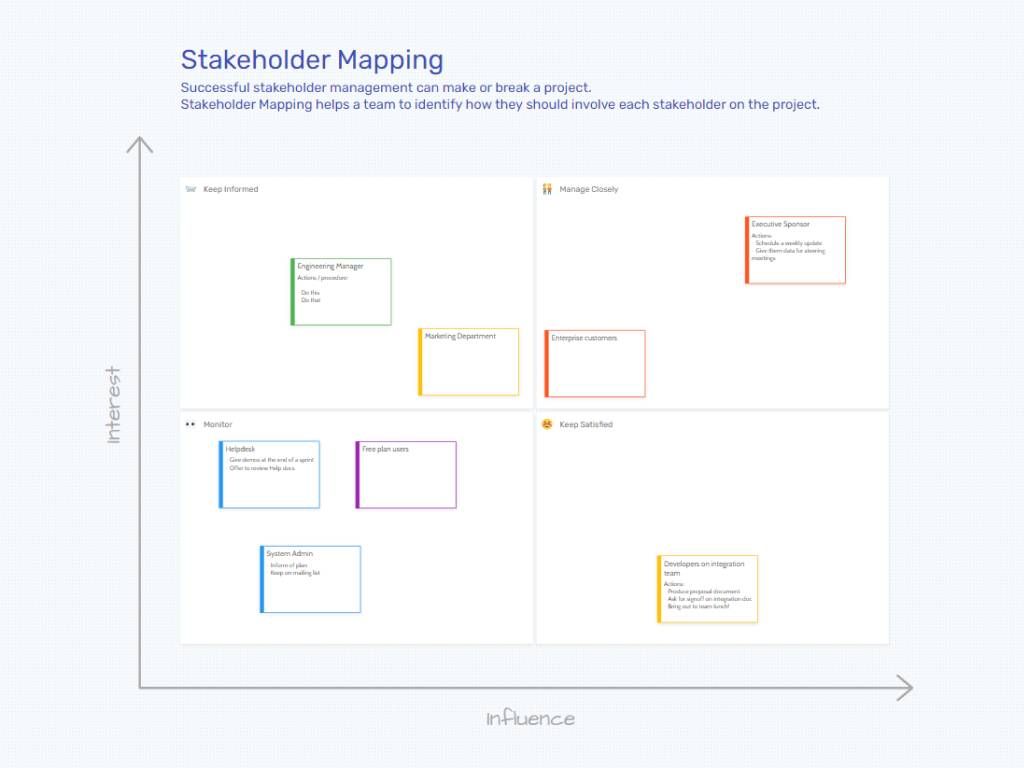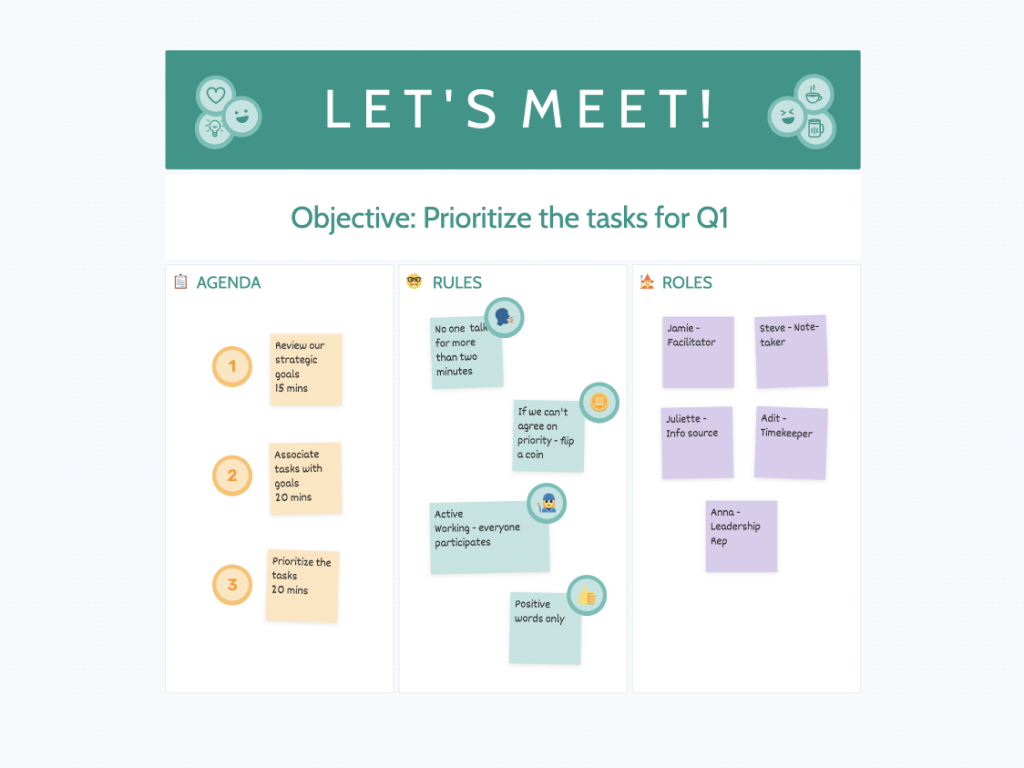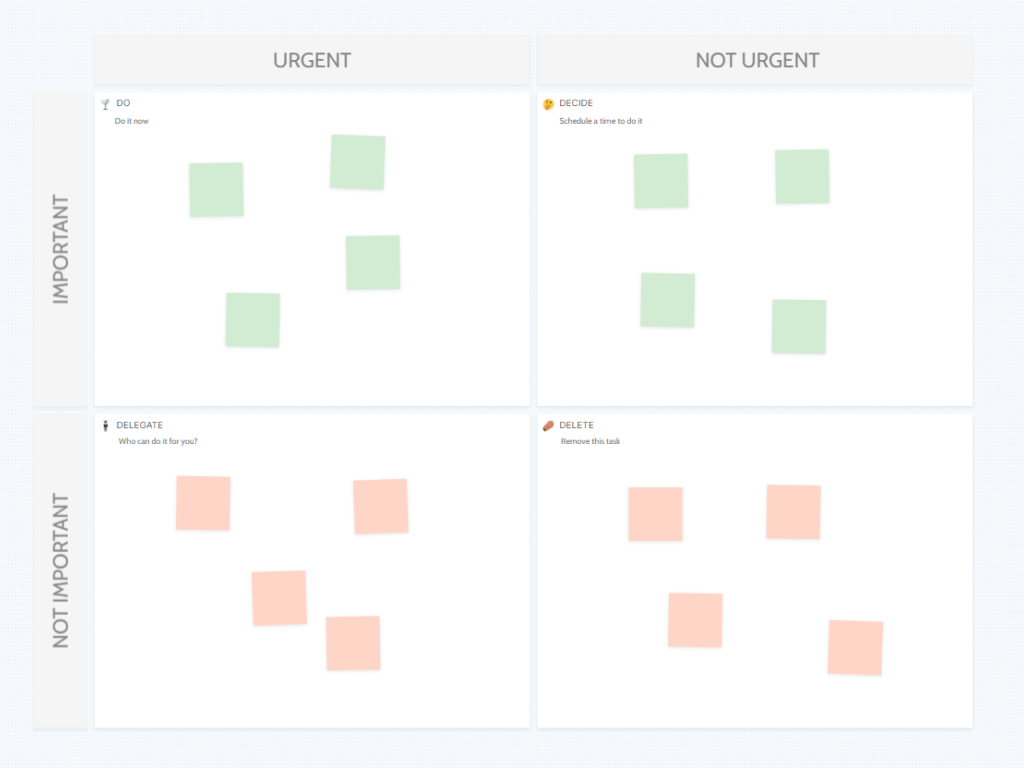Stakeholder Mapping – who will make or break your project?
When starting a new project, it’s important to identify the key people who will be involved or have an interest. A stakeholder map is a tool that helps you identify and visualize these people. It helps you keep track of who’s important, who you need to communicate with, and who you need to get support from. By using a stakeholder map, you can make sure everyone is on the same page and working towards the same goals.
In this exercise, you first write down all the stakeholders, no matter how small or large their impact may be. Then you place each stakeholder on a 2×2 grid based on their interest and influence on the project. Lastly you decide how to involve each stakeholder on the project.
How to create a Stakeholder Map in Metro Retro
-
Set up the Metro Retro board: Create a Metro Retro board from the Stakeholder Mapping template and invite your team members to join.
-
Define the objective and scope of the stakeholder map: As a team, you should define the purpose of the stakeholder map and determine its scope. What are the goals and outcomes you’re aiming to achieve? What are the boundaries of the map, in terms of the stakeholders you want to include?
-
Brainstorm stakeholders and add them to the board: As a team, you can begin brainstorming stakeholders and adding them to the relevant sections on the board. You can use sticky notes in Metro Retro to add each stakeholder’s name, along with any relevant information such as their role, level of influence, and relationship to other stakeholders.
-
Group and prioritize stakeholders: Once you’ve added all the stakeholders, you can begin grouping them based on their characteristics and prioritizing them based on their level of importance or influence. This can be done by rearranging the sticky notes on the board or by using Metro Retro’s grouping and voting features.
-
Discuss and refine the map: As a team, you can discuss and refine the stakeholder map, making adjustments as needed based on feedback and insights from team members. You can use Metro Retro’s comment feature to discuss specific stakeholders and share ideas.
-
Use the map for decision-making and communication: Once the stakeholder map is complete, you can use it as a tool for decision-making and communication. You can refer to the map when making decisions that impact stakeholders, and use it to communicate with stakeholders about the project.
- Follow up and update the map: As the project progresses, you should regularly review and update the stakeholder map to ensure it remains accurate and relevant. This can be done during team meetings or through asynchronous updates on the Metro Retro board.



